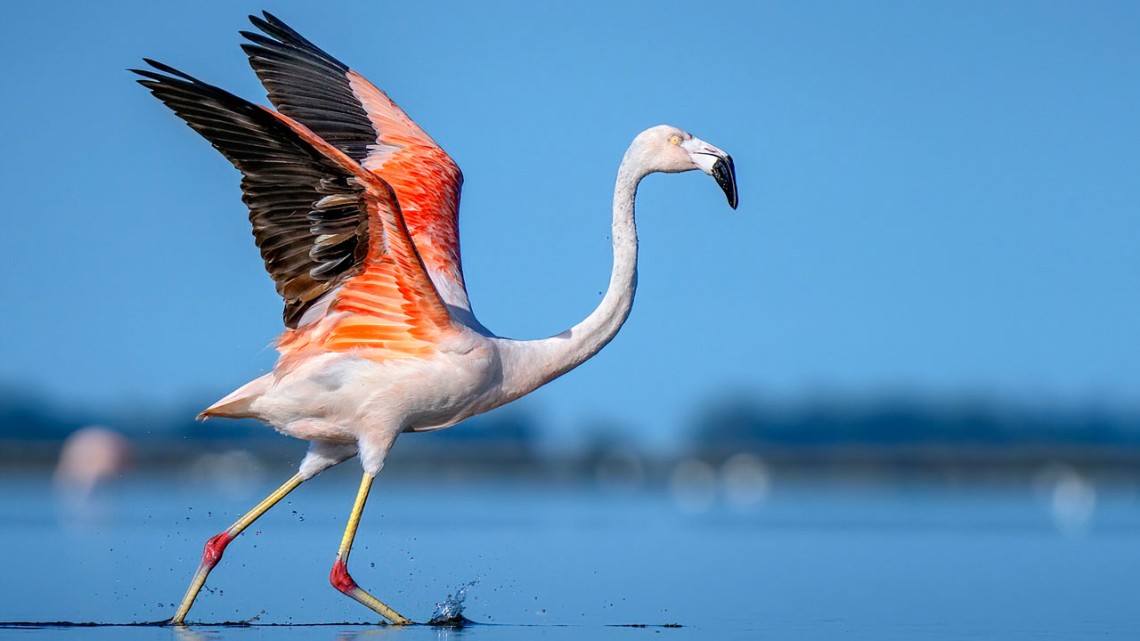
The Chilean Flamingo is a near-threatened species that gathers in large numbers at shallow lakes and lagoons.
Partnership boosts worldwide bird conservation
By Pat Leonard
The Cornell Lab of Ornithology and BirdLife International have joined forces to monitor bird populations around the world using the Lab of Ornithology’s massive eBird citizen science database, a partnership with global impact for bird conservation.
Bird monitoring has become critical because so many of the world’s species are declining rapidly in the face of human-caused threats, such as habitat loss and climate change.
“This new eBird tool integrates up-to-date information on BirdLife’s Important Bird and Biodiversity Areas (IBAs) and Key Biodiversity Areas (KBAs),” said eBird coordinator Ian Davies. “That information comes from a network of more than 13,000 sites that are among the most important for birds – but often with little monitoring to understand the current status of many species at these sites.”
This is where everyday birdwatchers become a vital part of this collaboration. eBirders – currently 800,000 strong and growing – are the ground troops who report which species they’ve observed, where, when and in what numbers.
“We couldn’t be more excited to work with BirdLife International,” Davies said. “The partnership connects eBird’s database of 1.25 billion bird sightings with BirdLife’s hundreds of conservation partner organizations that are changing the world through their local conservation efforts. We think this kind of work can make a real difference.”
Through eBird, observations can now be reported from BirdLife IBAs and KBAs located in more than 100 countries. That information will help clarify the distribution, abundance, movements and population trends for species found there and inform vital conservation efforts. Visitors to the eBird website will be able to see summaries of reported species in these important BirdLife conservation areas, updated in real time.
“The eBird data can be used to help pinpoint new sites that qualify as IBAs and KBAs,” said Stuart Butchart, chief scientist at BirdLife International, “by highlighting locations outside the existing network that support globally significant populations of species of conservation concern. They can also help monitor the populations of such species in these sites over time, for example, by tracking the proportion of birders’ checklists reporting a particular species at a particular location.”
By integrating BirdLife IBAs and KBAs, eBird data can be used to make current assessments about the populations of key bird species and how they may be changing. For example, the data can be used to pinpoint whether migratory birds are arriving on breeding grounds sooner or later than usual. Are fewer and fewer numbers of a certain species being reported from an area?
“This collaboration is but a first step in our shared commitment to build a global community of people supporting nature conservation,” said eBird director Chris Wood. “Together, we will expand our impact in ways that enable local communities and governments at all levels to tackle biodiversity by using the best available science to identify key biodiversity areas, monitor them and ensure that they are managed effectively.”
Pat Leonard is a staff writer for the Cornell Lab of Ornithology.
Media Contact
Get Cornell news delivered right to your inbox.
Subscribe
